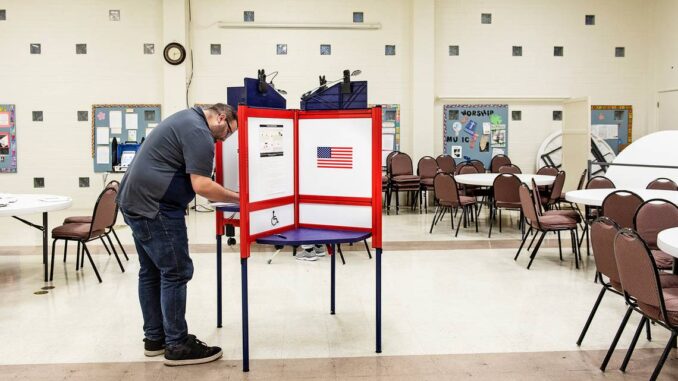
California has registered a record-high of 21 million voters this year, recording the highest rate of registration since the election of 1940, according to a report from voter data firm Political Data Inc.
The influx of registrations means 83% of eligible Californians are registered to vote. The last time it was that high was in 1940, when the rate was slightly higher than 83%, according to the data firm.
Nearly two-thirds of the new registrations are millennials or Generation Y, born after 1996, the report found. Young voters represent about 37% of total registrants, while baby boomers – those born between 1946 and 1964 – represent 29% of total registrations, the report said.TOP ARTICLES
But just because young people represent more of the registered voters doesn’t mean they’re more likely to vote, said Paul Mitchell, vice president of the firm. In the March 2020 primaries, Baby Boomers represented 38% of the total vote, whereas young voters represented only 25% of all votes.
“Traditionally, younger voters don’t participate at as high of a rate as older voters,” Mitchell said. “Another way of putting it is that the people most likely to vote are people who have a longer history of casting ballots. Voting becomes like this habit. So once you’ve developed the habit or the muscle memory around voting, you’re much more likely to vote.”
Nonetheless, Mitchell said he expects young people to turnout at higher rates than in recent presidential elections, due to both the cultural movement around the election and the mechanisms around voting, including automatic registration and mail-in ballots.
“(Young voter) turnout will still likely be lower than the turnout of 50 and 60-year-olds, but it probably will be a lot higher than it was in 2018 or even 2016 or 2012,” he said.
California’s voter registration has risen steadily over the past three decades. Between 1988 and 2014, registration rose 2% with each presidential election cycle, the report said. According to the Public Policy Institute of California, about 73% of eligible voters were registered in 2016. But the rate of increase has picked up in recent years, with a 6% increase in 2016 and already an 8% increase this year, according to Political Data Inc.
While cultural factors are contributing to the registration numbers, a big factor is the expansion of voter registration mechanisms throughout California in the past two years. The Motor Voter Program, implemented in spring 2018, automatically registers residents to vote when they go to the Department of Motor Vehicles to register a car or get a license.
According to the report, five million voters have registered or been re-registered at the DMV since the program was implemented, and one million voters have been captured by National Change of Address registrations, which automatically re-registers voters when they move.
Researchers say the automatic enrollments have led to an increasing share of “passive” registrants, or those voters who might not know they are registered. In the 2020 primary, these voters had a 16-point lower turnout than active registrants. The partisanship of the new registrations shows Democratic registration has stayed flat at 46%, with No Party Preference/Other registrations increasing to 35% and Republican registration at 19%.
As the nation continues to battle the coronavirus pandemic as the election approaches, many states are working to ensure ballots make it to voters.
California Gov. Gavin Newsom announced earlier this year the state will send mail-in ballots to every registered voter. The state has also launched a voter-education campaign, dubbed Vote Safe California, designed to inform residents of recent changes to the process.
The deadline to register to vote in California is Oct. 19. Mitchell said he expects to see significant increases in registrations in the coming weeks, and estimates the state could see numbers as high as 21.5 million.
“I could see us gaining a couple hundred thousand more voters before Election Day,” he said.



Be the first to comment